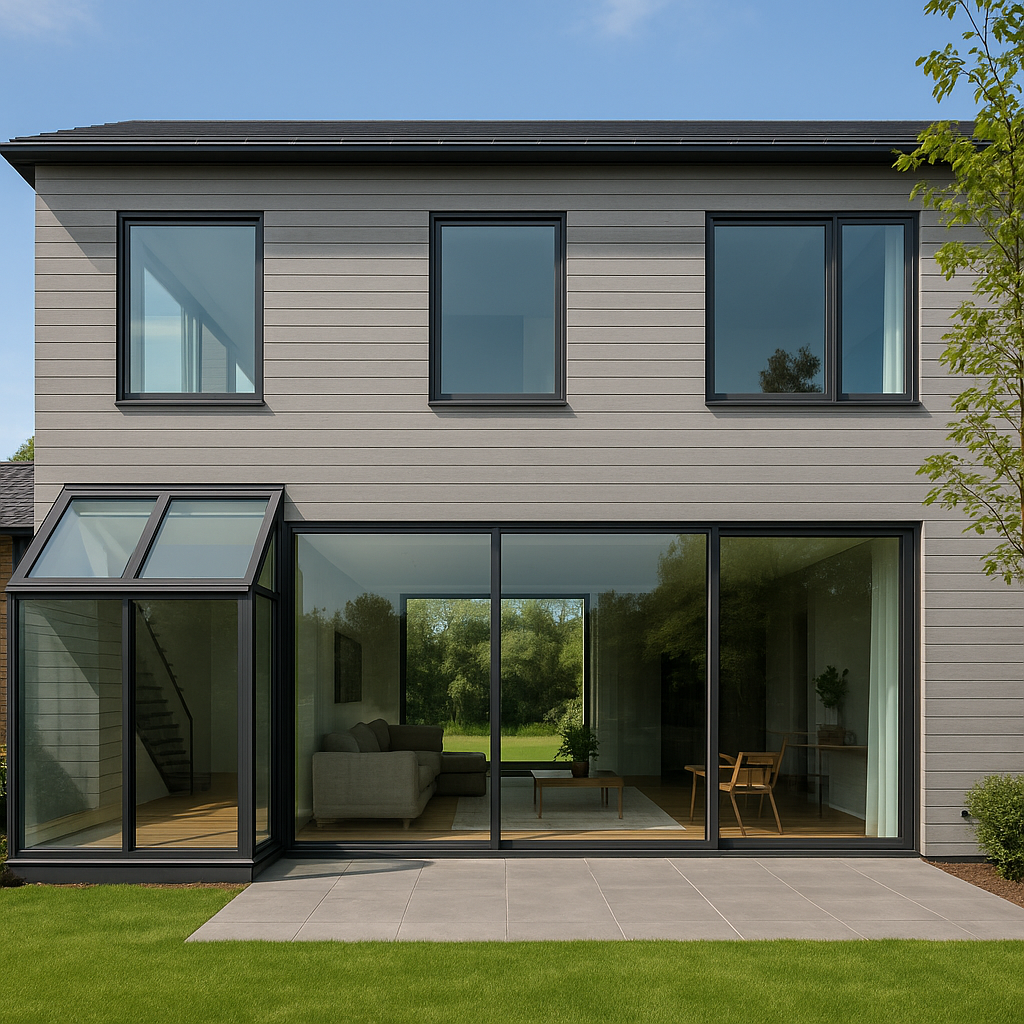Modern housing design is shaped by two main priorities: energy efficiency and comfort. Homeowners increasingly seek solutions that lower utility bills, reduce carbon footprints, and improve indoor living. One technology that meets all these needs is glass low E.
Short for low-emissivity glass, glass low E uses advanced coatings to reduce unwanted heat transfer, optimize natural light, and protect interiors. Once considered a luxury feature, it has now become a must-have element in residential construction and renovation projects.
This article explores where glass low E is most used in modern housing, its performance benefits, and why it is a cornerstone of sustainable architecture.
What Is Glass Low E?
Glass low E is treated with a microscopically thin, transparent metallic coating that reflects infrared and ultraviolet rays while allowing visible light through.
- In winter: It reflects indoor heat back inside, reducing heat loss.
- In summer: It blocks solar heat, keeping interiors cooler.
- Year-round: It allows maximum daylight while minimizing glare and UV damage.
This makes low-E glass a smart, adaptive solution for modern homes across varying climates.
Why Glass Low E Is Essential in Housing
Before diving into where it’s used, it’s important to understand why low-E glass is so valued:
- Energy efficiency: Cuts heating and cooling costs by 10–25%.
- Comfort: Reduces hot and cold spots near windows.
- UV protection: Blocks up to 99% of damaging ultraviolet rays.
- Aesthetic appeal: Maintains clarity and brightness.
- Durability: Works in combination with double or triple glazing.
These qualities make it a cornerstone of green building practices and modern residential design.
Common Uses of Glass Low E in Modern Housing
1. Residential Windows
The most common application of glass low E is in windows. Whether double-pane or triple-pane, these windows ensure thermal comfort throughout the year.
- Casement and sliding windows: Popular for maximizing light while controlling solar heat.
- Picture windows: Large fixed panes that remain efficient despite their size.
- Bay and bow windows: Enhance natural light without sacrificing energy performance.
2. Patio and Balcony Doors
Glass doors connecting interior and exterior spaces often face high solar exposure. Using glass low E in sliding or French doors ensures:
- Reduced solar heat gain in summer.
- Clear visibility without harsh glare.
- Improved insulation during winter.
3. Skylights and Roof Windows
Skylights add daylight but can also cause overheating. Low-E coatings solve this by filtering out infrared radiation while preserving natural light.
4. Glass Facades and Large Openings
Modern homes increasingly feature floor-to-ceiling glazing. In these designs, glass low E provides the insulation needed to make bold architectural choices energy efficient.
5. Specialty Applications
- Bathrooms: Low-E laminated glass provides both safety and efficiency.
- Sunrooms and extensions: Creates year-round comfort in glazed spaces.
For safety-critical applications, read more in Why is Glass Low E Laminated Used in Safer Glazing?.
Glass Low E in Different Climate Zones
Cold Climates
- Retains indoor heat during winter.
- Reduces condensation near windows.
Hot Climates
- Blocks solar radiation, cutting cooling loads.
- Keeps interiors naturally cooler.
Mixed Climates
- Offers year-round adaptability, making it perfect for regions with seasonal extremes.
Types of Glass Low E for Housing
Low-E glass comes in multiple variants designed for different housing needs.
- Hard-Coat Low-E (Pyrolytic): Durable and suitable for single-pane or storm windows.
- Soft-Coat Low-E (Sputtered): Superior insulation, often used in double or triple glazing.
For a deeper explanation, see What Role Does Glass Low E Tempered Play in Design? and Which Glass Low E Types Use Double or Triple Silver?.
Energy Performance and Home Value
Glass low E is more than a comfort upgrade—it’s also a financial asset.
- Reduced bills: Energy-efficient windows cut household costs.
- Government incentives: Many regions offer rebates or financing for energy upgrades.
- Resale value: Buyers increasingly prioritize homes with energy-efficient features.
Handling and Transporting Low-E Glass in Housing Projects
Transporting and installing large low-E glass panels requires specialized care. Improper handling can damage coatings or increase safety risks.
- Safe logistics: Use stone transportation systems to move panels securely.
- Sustainable delivery: Modern stone transport practices reduce breakage and minimize environmental impact.
These methods ensure that residential installations are efficient, safe, and sustainable.
Environmental Value of Glass Low E
Beyond energy savings, low-E glass supports sustainable housing:
- Lower carbon footprint: Reduced reliance on HVAC systems.
- UV protection: Extends the lifespan of furniture and interior finishes.
- Daylighting: Brightens interiors, reducing artificial lighting needs.
- Durability: Long-lasting performance minimizes material waste.
These values align with global green building practices and eco-conscious living. For broader sustainability ideas, see BrightView Landscape | Smart Gardening & Waste Reduction.
Considerations When Choosing Glass Low E
When selecting low-E glass for housing, architects and homeowners must consider:
- Climate: Cold regions may benefit from higher solar heat gain, while hot climates require stronger solar control.
- Glazing type: Double vs. triple glazing affects both performance and cost.
- Frame materials: Vinyl, aluminum, and composite frames influence insulation.
- Installation quality: Even the best glass underperforms without proper sealing.
- Budget and long-term value: Low-E glass is an upfront investment with lasting returns.
Conclusion
Glass low E has become indispensable in modern housing. From windows, skylights, and facades to patio doors and sunrooms, it provides energy efficiency, comfort, UV protection, and aesthetic flexibility.
Its adaptability to different climates, ability to integrate with other window technologies, and proven return on investment make it a standard in sustainable, high-performance homes.
By choosing glass low E, homeowners are not just upgrading their windows—they’re investing in comfort, efficiency, and the future of eco-friendly living.

